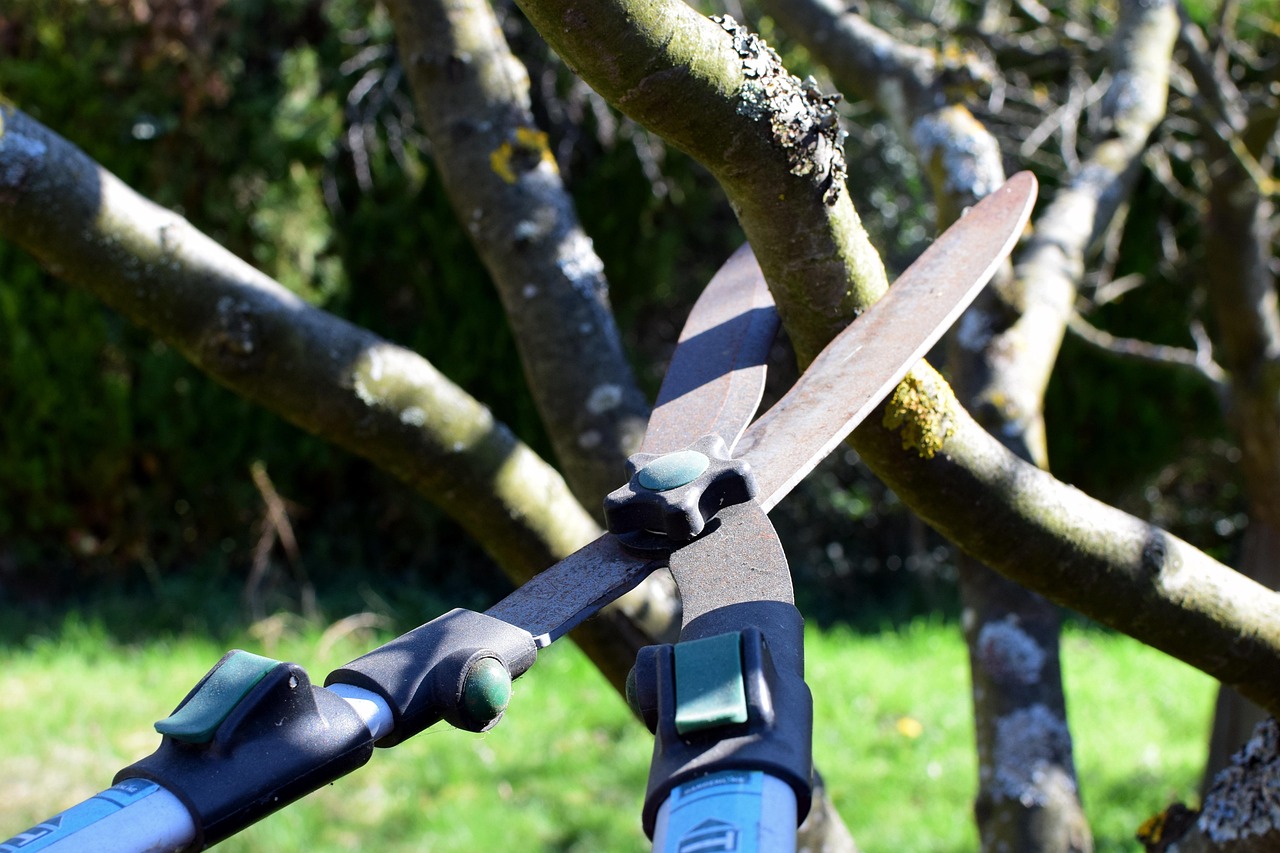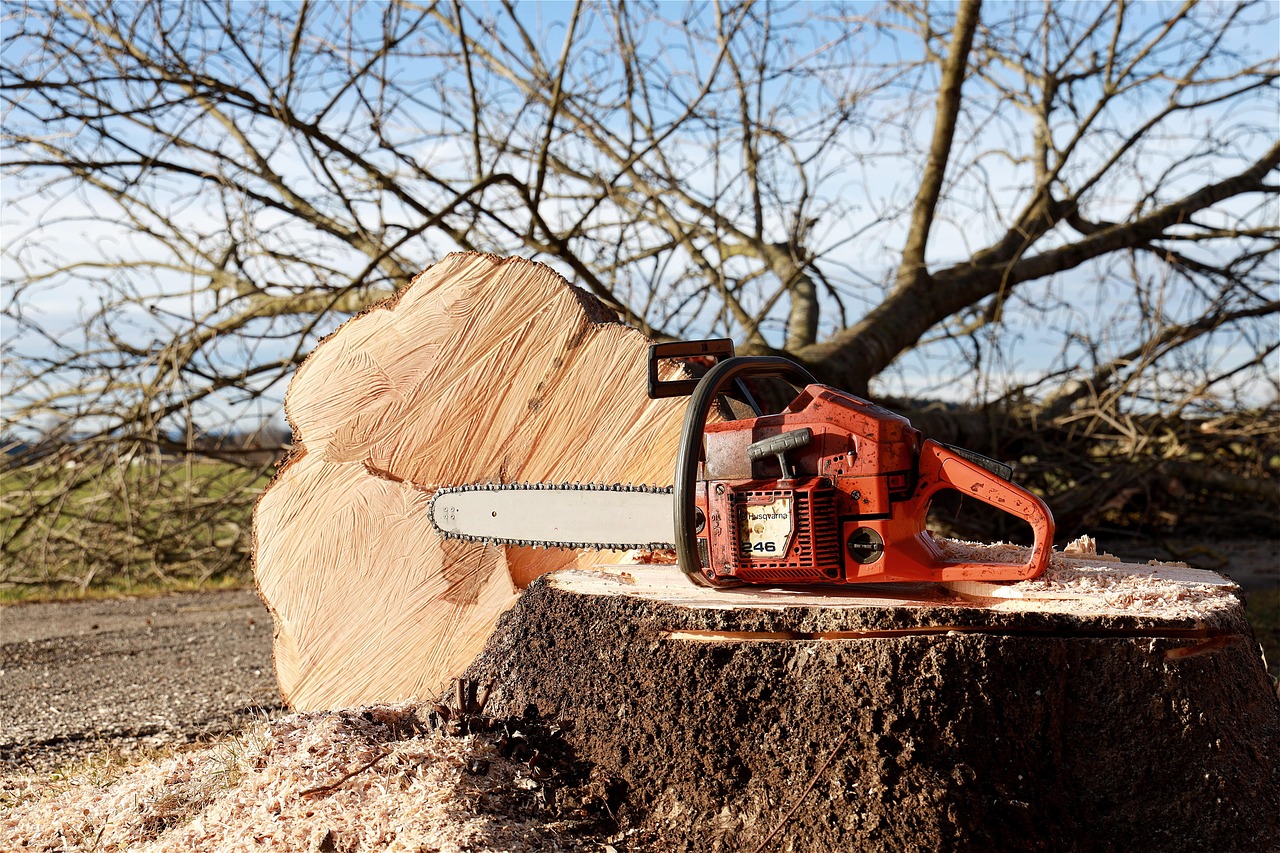Young tree pruning techniques focus on shaping and strengthening the structure of young trees. Proper pruning promotes healthy growth, reduces disease risk, and ensures trees develop strong, stable forms as they mature.
Understanding tree physiology is crucial for effective pruning. Young trees are in a formative stage of growth, which makes them more adaptable to shaping. Pruning during this stage can significantly impact their structural integrity and overall health. It is essential to prune at the right time and with the correct techniques to maximize benefits.

Pruning young trees not only enhances their aesthetic appeal but also encourages strong branch development. By removing weak or competing branches, you help direct energy toward the primary leader. This process leads to better light penetration and air circulation, which are vital for healthy growth.
Importance of Pruning Young Trees
Pruning young trees is important for several reasons:
- Structural Integrity: Proper pruning helps establish a strong central leader and a balanced branch structure.
- Health Benefits: Removing dead or diseased branches prevents the spread of pests and diseases.
- Improved Airflow: Thinning out branches allows for better airflow, reducing the chances of fungal infections.
- Aesthetic Appeal: Well-pruned trees have a more attractive shape and can enhance landscape design.
When considering the best practices for pruning, timing and technique are critical factors. Typically, the best time to prune young trees is during late winter or early spring before new growth begins. This dormant period minimizes stress on the tree and reduces sap loss.

Basic Pruning Techniques
Several techniques can be employed when pruning young trees:
1. Heading Cuts
Heading cuts involve removing the tips of branches. This technique encourages bushier growth by stimulating lateral buds. However, it should be done carefully to avoid leaving stubs that may become entry points for pests or diseases.
2. Thinning Cuts
Thinning cuts remove entire branches back to their point of origin. This method helps improve light penetration and air circulation within the canopy. It is particularly useful for reducing overcrowding among branches.

3. Removal of Competing Leaders
If multiple leaders develop, it’s important to select the strongest one and remove the others. This practice helps ensure that the tree develops a single dominant leader, which enhances stability as it grows.
Tools for Pruning
Using the right tools is essential for effective pruning. Here are some commonly used tools:
| Tool | Purpose |
|---|---|
| Hand Pruners | Ideal for small branches and precise cuts. |
| Loppers | Used for larger branches that are too thick for hand pruners. |
| Saws | Necessary for cutting thicker branches or trunks. |
| Pruning Shears | Great for shaping and trimming foliage. |
Maintaining tools in good condition is equally important. Sharp blades make cleaner cuts, reducing damage to the tree and promoting quicker healing. Always sterilize tools before use to prevent the spread of diseases.

Common Mistakes to Avoid
Avoiding common mistakes can lead to better outcomes when pruning young trees. Here are some pitfalls to watch out for:
- Over-Pruning: Removing too much foliage can stress the tree and hinder growth.
- Poor Timing: Pruning at the wrong time can expose trees to stress or pests.
- Neglecting Tree Health: Always check for signs of disease before pruning. Cutting diseased branches can spread infections.
- Incorrect Cuts: Making improper cuts can lead to poor healing and structural issues.
By understanding these techniques and practices, you can ensure that your young trees develop into strong, healthy specimens. Proper pruning not only enhances their appearance but also sets the foundation for their future growth and stability in your landscape.
Advanced Pruning Techniques
As you become more familiar with the basic pruning techniques, you may want to explore advanced methods for enhancing the structural integrity of young trees. These techniques require a deeper understanding of tree growth patterns and physiology. Here are some advanced pruning techniques that can be beneficial.
1. Structural Pruning
Structural pruning focuses on shaping young trees to ensure they develop a strong framework. This technique emphasizes the importance of a central leader and well-spaced lateral branches. The key steps include:
- Selecting the Leader: Choose the strongest, straightest leader and remove competing leaders.
- Branch Selection: Identify a few well-placed lateral branches that will serve as scaffolds for future growth.
- Regular Assessment: Revisit the tree regularly to adjust pruning as needed to maintain desired structure.
This approach not only improves stability but also enhances the tree’s ability to withstand wind and other environmental stresses.
2. Training Young Trees
Training young trees involves guiding their growth through pruning and other methods. This can be especially useful for fruit trees or ornamental varieties. Effective training includes:
- Espalier: A technique used to train trees to grow flat against a wall or trellis.
- Candelabra Style: A method of training branches to extend outwards at various angles, creating an attractive form.
- Pollarding: A pruning method that encourages dense growth by cutting back branches to a stump.
Training can enhance both the aesthetic appeal and fruit production of young trees.
Seasonal Pruning Considerations
The timing of pruning plays a significant role in its effectiveness. Different seasons offer unique advantages and challenges, impacting tree health and growth. Here are considerations for each season:
Winter Pruning
Winter is often considered the best time for major pruning because trees are dormant. Benefits include:
- Minimal Stress: Trees experience less stress when pruned in winter.
- Easier Visibility: With no leaves, it’s easier to see the tree structure and identify which branches need attention.
- Faster Healing: Cuts made in winter heal quicker when growth resumes in spring.
Spring Pruning
Spring can also be an appropriate time for certain types of pruning, particularly for flowering trees. Important points include:
- Avoiding Late Frosts: Be cautious of late frosts that can damage freshly pruned trees.
- Encouraging Growth: Pruning just before new growth begins can stimulate a healthy flush of leaves.
- Monitoring Health: Spring allows you to assess tree health after winter and adjust your pruning strategy accordingly.
The Role of Mulching and Watering
Alongside pruning, proper mulching and watering are vital for the health and structural integrity of young trees. These practices support overall tree vitality and recovery from pruning.
Mulching Benefits
Applying mulch around the base of young trees offers numerous benefits:
- Moisture Retention: Mulch helps retain soil moisture, reducing the need for frequent watering.
- Weed Suppression: A layer of mulch inhibits weed growth, minimizing competition for nutrients.
- Soil Temperature Regulation: Mulch maintains a consistent soil temperature, promoting healthy root development.
Watering Practices
Young trees require adequate moisture, especially during the first few years after planting. Key watering practices include:
- Deep Watering: Water deeply but infrequently to encourage deep root growth.
- Avoiding Overwatering: Ensure that soil drains well to prevent root rot.
- Monitoring Weather Conditions: Adjust watering schedules based on rainfall and temperature changes.
Pest and Disease Management Post-Pruning
Pests and diseases can pose serious threats to young trees, especially after pruning. It is crucial to monitor your trees closely following any pruning activities. Here are some strategies for effective management:
- Regular Inspections: Check your trees frequently for signs of pests or diseases, particularly in the weeks following pruning.
- Pest Control Measures: Use organic or chemical treatments as needed, following best practices for safety and effectiveness.
- Cultural Practices: Maintain good cultural practices, such as proper watering and mulching, to promote tree health and resilience against pests.
The combination of good pruning techniques with effective care can significantly enhance the structural integrity and longevity of young trees, allowing them to thrive in any landscape.
Seasonal Maintenance Practices
In addition to pruning, seasonal maintenance practices play a vital role in ensuring the long-term health and structural integrity of young trees. These practices can vary depending on the season and help address specific needs throughout the year.
Spring Maintenance
Spring is a crucial time for young trees as they emerge from dormancy and begin new growth. Key spring maintenance practices include:
- Fertilization: Apply a balanced fertilizer to provide essential nutrients that support new growth. Be cautious not to over-fertilize, as this can harm young roots.
- Mulch Application: Refresh the mulch layer around the base of the tree to promote moisture retention and suppress weeds.
- Watering: Ensure consistent watering, especially if spring is dry. Deep watering encourages strong root development.
Summer Maintenance
During the summer, young trees require special attention to protect them from heat stress and pests. Important practices include:
- Regular Watering: Continue deep watering during hot spells, ensuring the soil remains moist but not waterlogged.
- Pest Monitoring: Keep an eye out for pests that thrive in warm weather, such as aphids or spider mites, and take action if necessary.
- Pruning Maintenance: Perform light pruning to remove any dead or diseased branches that may have developed since spring.
Fall Maintenance
As trees prepare for dormancy, fall maintenance is essential for their health and future growth. Key tasks include:
- Final Pruning: Conduct any necessary pruning before the onset of winter. Focus on removing any weak or crossing branches that could become problematic.
- Mulching: Add a thick layer of mulch around the base of the tree to insulate roots during cold months and conserve moisture.
- Watering Before Winter: Water deeply before the ground freezes to ensure that the tree is adequately hydrated.
Winter Maintenance
Winter may seem like a low-maintenance season, but there are still important tasks to address:
- Snow and Ice Management: Carefully remove heavy snow or ice from branches to prevent breakage. Use a broom instead of shaking branches.
- Check for Damage: Inspect trees for any signs of damage from winter storms, including broken branches or bark injuries.
- Protecting Young Trees: Consider using tree wraps or guards to protect young trunks from sunscald and animal damage during winter.
Understanding Tree Growth Patterns
A deeper understanding of tree growth patterns can assist in making informed pruning decisions. Each tree species has unique growth habits that affect how and when you should prune. Here are several factors to consider:
Growth Habit
Different species exhibit varying growth habits. Some may have a naturally upright form, while others spread wide. Understanding these habits can help you shape young trees effectively:
- Columnar Trees: These trees grow tall and narrow, making them suitable for tight spaces.
- Spreading Trees: These trees have wide canopies and require careful management of lateral branches to avoid overcrowding.
- Pyramidal Trees: These trees benefit from maintaining a strong central leader and evenly spaced lateral branches.
Response to Pruning
Trees respond differently to pruning based on their species and age. Here are some general responses you might expect:
- Increased Growth: Young trees often respond positively to pruning by producing more lateral shoots.
- Healing Responses: Trees may produce callus tissue at cut sites, which helps seal wounds.
- Stress Responses: Over-pruning or improper techniques can lead to stress, stunted growth, or increased susceptibility to diseases.
The Impact of Environmental Factors
The environment in which a tree grows can significantly influence its health and structural integrity. Here are some critical environmental factors to consider:
Soil Quality
The quality of soil affects root development and overall tree vigor. Key aspects include:
- Nutrient Content: Soil should be rich in essential nutrients like nitrogen, phosphorus, and potassium.
- pH Levels: Most trees prefer slightly acidic to neutral soil (pH 6.0 to 7.0). Testing soil pH can help guide amendments.
- Drainage: Proper drainage prevents waterlogging, which can damage roots and lead to disease.
Sunlight Exposure
Sufficient sunlight is critical for photosynthesis and healthy growth. Consider these factors regarding sunlight exposure:
- Dappled Sunlight: Some trees thrive in partial shade, while others require full sun for optimal growth.
- Avoiding Competition: Ensure that young trees are not overshadowed by larger plants or structures that block sunlight.
- Monitoring Growth Patterns: Observe how sunlight impacts tree growth over time and adjust planting locations if necessary.
A comprehensive approach to understanding these factors will enhance your ability to maintain young trees effectively throughout their development.
Long-Term Care and Monitoring
After implementing effective pruning techniques and maintenance practices, ongoing care and monitoring of young trees are essential for their long-term health and structural integrity. Regular assessments can help identify issues before they become significant problems. Here are some strategies for long-term care:
Regular Health Checks
Conducting regular health checks on your young trees can help you spot potential issues early. Key aspects to monitor include:
- Leaf Condition: Look for signs of discoloration, spots, or wilting, which can indicate stress or disease.
- Branch Structure: Assess the branching pattern and ensure that the leader remains dominant and that lateral branches are appropriately spaced.
- Root Health: If possible, check the root zone for signs of rot or pests, especially after heavy rains or watering.
Documenting Growth
Keeping a growth record can provide insight into how well your trees are developing. Consider documenting:
- Height and Width Measurements: Take regular measurements to track growth patterns over time.
- Pruning History: Record when and what type of pruning was performed to evaluate its effects on growth.
- Pest and Disease Incidents: Note any pest or disease occurrences and how they were managed.
The Benefits of Professional Guidance
While many homeowners can successfully prune and care for young trees, seeking professional guidance can enhance outcomes. Certified arborists bring expertise that can be invaluable in complex situations. Here are some advantages to consider:
- Expertise in Tree Species: Professionals understand the specific needs and growth patterns of various tree species, enabling them to offer tailored advice.
- Advanced Techniques: Arborists can employ advanced techniques that may not be familiar to the average homeowner, ensuring optimal growth and health.
- Health Assessments: A professional can conduct thorough health assessments, providing insights into underlying issues that may not be visible.
Community Resources and Education
Utilizing community resources can further enhance your knowledge and practices regarding tree care. Many local extension services, botanic gardens, or tree nurseries offer educational programs or workshops. Here are some resources to consider:
- Workshops and Seminars: Attend local workshops on tree pruning, planting, and maintenance techniques.
- Online Resources: Explore reputable websites and forums dedicated to horticulture and arboriculture for articles and discussions.
- Community Programs: Participate in community tree planting or maintenance projects to gain hands-on experience.
Final Thoughts
Caring for young trees through proper pruning techniques is crucial for establishing strong structural integrity and long-term health. By understanding tree physiology, applying correct pruning methods, and integrating seasonal maintenance practices, you can effectively support the growth of young trees in your landscape. Regular monitoring, documentation, and seeking professional guidance when necessary will further enhance their development.
The journey of nurturing young trees is both rewarding and essential for creating healthy urban and rural environments. As you engage in this process, remember that each tree contributes to the ecosystem by providing oxygen, shade, beauty, and habitat for wildlife. By investing time and effort into proper tree care now, you are ensuring a greener, more sustainable future for generations to come.
The techniques discussed throughout this article equip you with the knowledge to promote healthy, resilient trees. Embrace the role of caretaker and enjoy the beauty and benefits that young trees bring to your surroundings.
